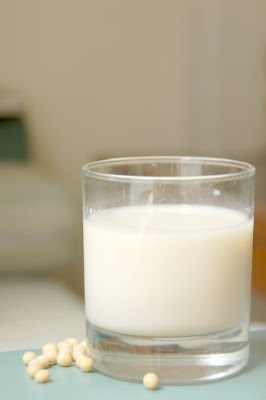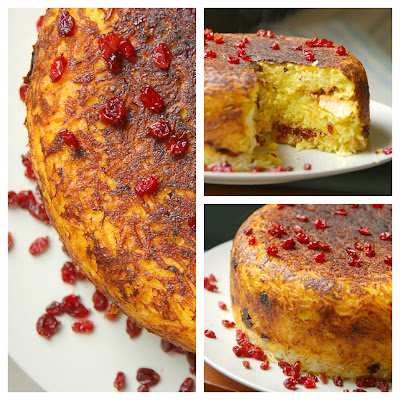Soy Milk
A couple of months back, I made a bit of a failed attempt at cooking some Chinese food. I think I became really moody because things didn't go as well as I'd expected, because I never really managed to finish making everything I had planned on the menu. One of these things was soybean milk.
In fact, I've been meaning to make soy milk ever since I bought a blender that came with a special attachment to make it. The attachment is just a wire mesh cylinder that fits right on top of the blender's blades. You put your beans inside the mesh with lots and lots of water, start the blender and wait until the beans turn to mush and you get some fresh and yummy soymilk!
Well, it's not that easy. There's still a couple more steps involved after this process to make it taste less like cardboard and more like the soy milk from your average hole-in-the-wall restaurant in Hong Kong. Supposedly one of these steps also involves adding pandan leaves, but since I have no idea what that is, I didn't bother; it still tasted just as it's supposed to. It's also very very cheap to make as just a handful of beans can give you enough milk for a couple of days!
Ingredients
In fact, I've been meaning to make soy milk ever since I bought a blender that came with a special attachment to make it. The attachment is just a wire mesh cylinder that fits right on top of the blender's blades. You put your beans inside the mesh with lots and lots of water, start the blender and wait until the beans turn to mush and you get some fresh and yummy soymilk!
Well, it's not that easy. There's still a couple more steps involved after this process to make it taste less like cardboard and more like the soy milk from your average hole-in-the-wall restaurant in Hong Kong. Supposedly one of these steps also involves adding pandan leaves, but since I have no idea what that is, I didn't bother; it still tasted just as it's supposed to. It's also very very cheap to make as just a handful of beans can give you enough milk for a couple of days!
Ingredients
- 1 handful soybeans, hydrated overnight
- Water, lots of it
- Sugar, to taste
- Make sure the soybeans have been fully hydrated. An overnight bath with lots of water will do them well.
- Add 1/4 cup of beans with 3-4 cups of water inside the soybean milk-making attachment in a blender. If you don't have this attachment, add the beans straight into the blender with water. Blitz away until the beans are crushed and the water turns nice and milky white.
- Use a cheese cloth to strain away the liquid into a container. Strain through the cheese cloth a couple more times until you're left with a soft and silky jug of liquid.
- Transfer the liquid to a pan and add sugar to taste. Stir to dissolve the sugar as you bring the pan to a boil. This is apparently where you'd add pandan leaves, but I didn't.
- Let the milk cook for a while to get rid of the bitterness, but keep stirring. And it's done! You can drink it warm, at room temperature, cold, in coffee, tea, or whatever. I prefer it when it's been in the fridge for a couple of hours.


